Emblematic: Do Badge-Engineered Vehicles Offer a Better Value?
It isn’t all that taxing on an automaker’s wallet to take something already made for one brand, change a few trim pieces, and make it for another automaker (or internal automotive division) in the same factory. That’s the definition of badge engineering, and we are seeing its ramifications even in our modern times. Some do the act badge engineering proud, with significant sheetmetal changes and unique interiors, while others adhere pretty closely (or almost exactly) to the term. But what’s surprising is how the general public reacts to badge engineering, as it relates to both new and used vehicles.
That’s why we took a close look at the surprising resale values of badge-engineered vehicles nearly four years ago. Badge-engineered cars have been around for decades, and it seems time heals all wounds. Or perhaps at least some of them—let’s see how some of our list from 2020 fared after the pandemic. But let’s also throw in a new wildcard, just to see where the numbers take us.
1970 Plymouth Barracuda vs. Dodge Challenger
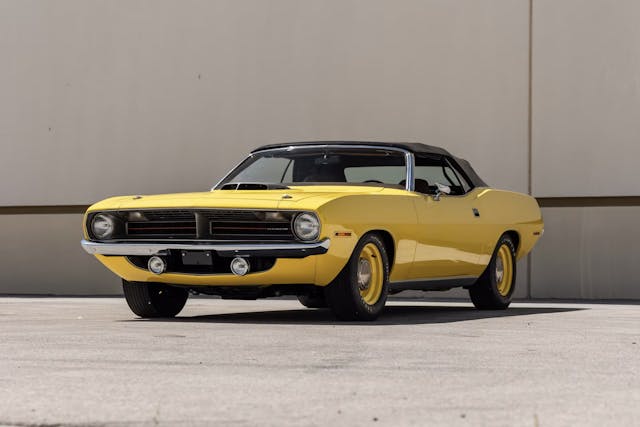
Back in pandemic times we learned the Plymouth Barracuda was five figures more valuable than a comparable Dodge Challenger, even if said Challenger was a more valuable R/T model. That’s a lot of bread for a vehicle with different front and rear fascias, and a shorter wheelbase and overall length. Apparently less is still more, as the 1970 Barracudas in #2 condition have appreciated 29% since 2020, which is significantly higher than the 16.7% increase for all 1970 Challengers.
In 2024, your average 1970 Challenger (both body styles and all small and big block engines) in #2 condition are worth about $123,000, while all comparable ‘Cudas are roughly $318,000. Yes, the Hemi-powered convertible E-bodies are expensive and skew the results significantly, but the delta is even more pronounced at the top: You only need $1,000,000 for a Challenger in this spec, but a cool 2.8 million gets you a similar ‘Cuda. No matter how that makes you feel, there’s no doubt that badge engineering can bring in the bucks for manufacturers and collectors alike!
Dodge Stealth R/T Twin Turbo vs. Mitsubishi 3000 GT VR-4
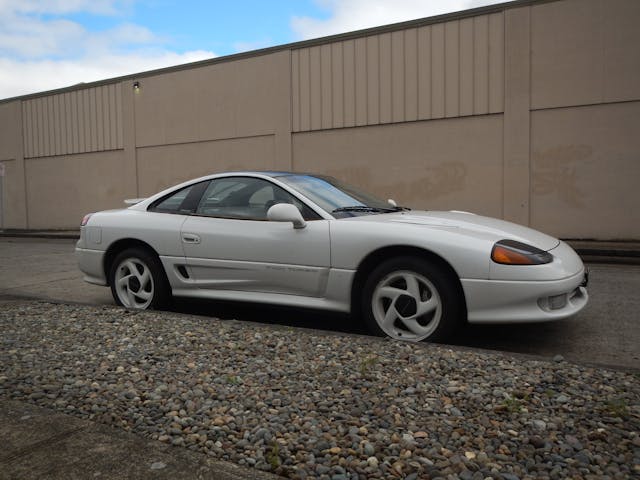
Fast forward a cool 20 years, and the performance car badge-engineering effort was a good bit different for Dodge: The 1990 Dodge Stealth R/T was a badge engineered Mitsubishi 3000 GT VR-4. Nary a Plymouth to be found, and during the pandemic the Stealth trailed the 3000 GT by anywhere from $3000–$10,000. This was mostly because the Mitsubishi was available in a highly prized, retractable hardtop “Spyder” configuration, while the Dodge was hatchback only. So what’s changed in 2024?
If you guessed nothing aside from a general increase in values, you’d win a prize. (Maybe I can dig up some Plymouth Neon emblems for your trouble.) The Stealth R/T in #2 condition is 29% higher in 2024, while the 3000 GT VR-4 is higher by an astounding 68%. The average prices are $21,850 for the Dodge and $39,700 for the Mitsubishi. But what’s truly surprising is that all 3000GT VR4’s are roughly the same price ($39,589) with only a few hundred dollars of extra value tacked onto the VR-4 Spyders. So it appears the VR-4 Spyder’s rising tide successfully lifted all boats in 2024, but more so if your performance coupe has a Mitsubishi badge.
Chrysler 300 C vs. Dodge Charger
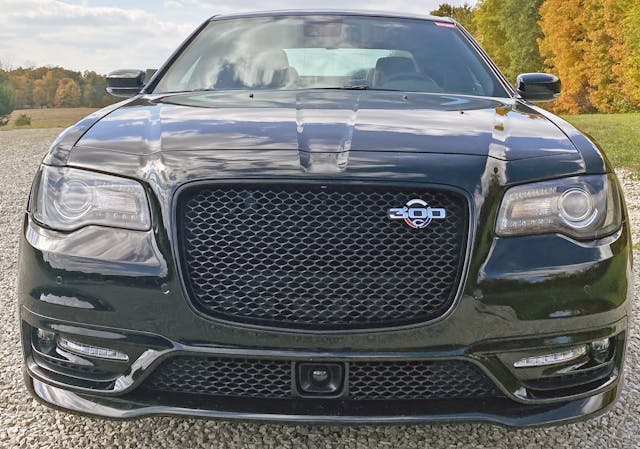
We last noted that the Charger R/T used to be $4000 more expensive than a Chrysler 300 C when listed on various car sales websites. The tables seem to have turned, at least when discussing the 2023 Chrysler 300 C that sported a 6.4-liter HEMI, a handful of unique throwback emblems and a limited production (2200 units) to celebrate the last of this iconic near-luxury sedan. Cars.com says this final 300 C is worth anywhere from $53,000-$57,000, while a Dodge Charger Scat Pack with the same powertrain is $47,000-$50,000. Perhaps the Chrysler’s final call and more mature clientele are finally giving it the valuation it deserves?
Not exactly. Other years of the smaller 5.7-liter HEMI Chrysler sedan are generally several hundred dollars cheaper than a comparable Dodge Charger R/T on Cars.com, while the prices are almost equal on CarGurus. Time will tell, but the appreciation of the 300C in the last four years suggests there might be some fireworks as these V-8 super sedans fully depreciate, find refuge from the impending scrapheap in the classic car marketplace, and their prices invariably appreciate like every other big-bore Mopar muscle car from the past. Don’t be surprised if the 2023 Chrysler 300 C becomes a 1970 ‘Cuda in a sea of Dodge Challengers, and it rises all 300s’ value in the process.
1979-86 Mercury Capri vs. Ford Mustang
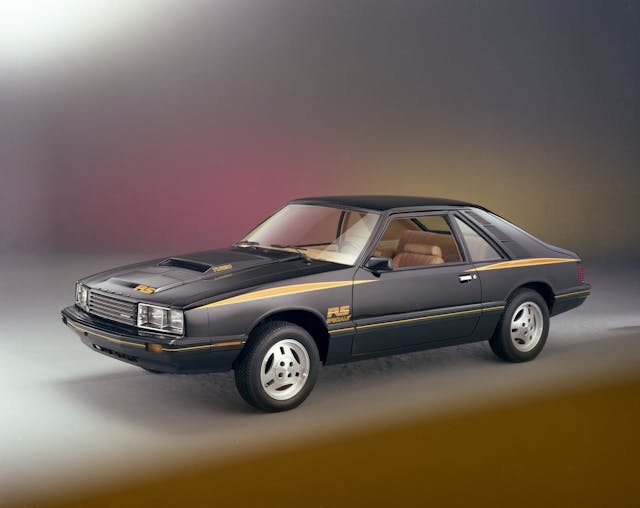
We didn’t cover the Mercury Capri and its Fox Body Mustang brother back in 2020, but considering the platform’s popularity it’s worth a closer look today. Admittedly the data is harder to come by, but Hagerty has insurance quote information that could shed some light on Mercury’s badge engineering efforts from the late Malaise Era. (Sorry, we don’t have enough to work with for a super-Malaisey Ford Pinto vs. Mercury Bobcat showdown!)
The Mercury Capri has roughly 12 times fewer quotes than its “four eyed” 1979-86 Mustang sibling, but we see the same upward trend that’s lifting up the famous Ford. This year, the Capri has had more quotes than any prior year, and that’s with another three months to go. The average value for those quotes comes in at $14,100. The values averaged a little below $12,000 four years ago, making for an 18% increase in value for the sporty Mercury. The four-eye Mustang has a similar 18% increase in quoted value, but those actual values are still significantly higher than the Capri. Back in 2020 a Mustang was 14.7% more valuable than its sibling, and today that has increased to 15.1%.
That’s pretty even, which is impressive considering how Saleen Mustangs tend to inflate four-eye Mustang values with six figure valuations to match their racing pedigrees. Without Saleen, the box-flared and bubble- (hatch) backed Capri could be closer to parity with the four-eye Mustangs. Considering how much hype there is around Fox Mustangs and how little anyone knows about Capris, that could be considered a resounding win for the now-classic Mercury Pony Car.
Cadillac XLR vs. Chevrolet Corvette (C6) convertible

Back in 2020 we noted that the XLR in the used car market (online) wasn’t performing as strongly as an automatic C6 Corvette convertible. The tide might be turning on that: A peek at Hagerty data shows that all versions of XLR (base, supercharged V-series) are roughly $4,000 more valuable than all automatic Corvette convertibles (base, Pace Car, Grand Sport, etc.) in the same #2 condition.
Four grand is a huge step up for the Cadillac Corvette (as it were) and that’s mostly because XLR values are up 27 percent on average since the pandemic. Base models used to be had for roughly $28,000 in 2020, but they are now closer to $36,000. Clearly the XLR is proof that a bespoke Cadillac creation with a Chevy chassis underneath has merit, and that badge engineering can truly stand the test of time.
1967 Mercury Cougar vs. Ford Mustang

Back in 2020 we noted that the Mercury Cougar was worth nearly $10,000 less than a V-8 Mustang coupe. That doesn’t include the Mustang fastback, which would render the kitty worth half that of the pony. Not much has changed since the pandemic, as the 1967 Cougar’s rate of appreciation (11 percent) is behind that of all 1967 Mustangs (18 percent).
If you remove the Mustang fastback and convertible, the story still remains the same: A big block (390-cid) Cougar GT is $18,000 cheaper than a Mustang GT coupe with the same motor. Looking at all V-8 engines, a Cougar is over $16,000 less than a Ford Mustang. Too bad Mercury’s slick little kitten can’t rise to the occasion like the Cadillac XLR, as it truly was a well-executed example of badge engineering.
Fiat 124 vs. Mazda MX-5 Miata
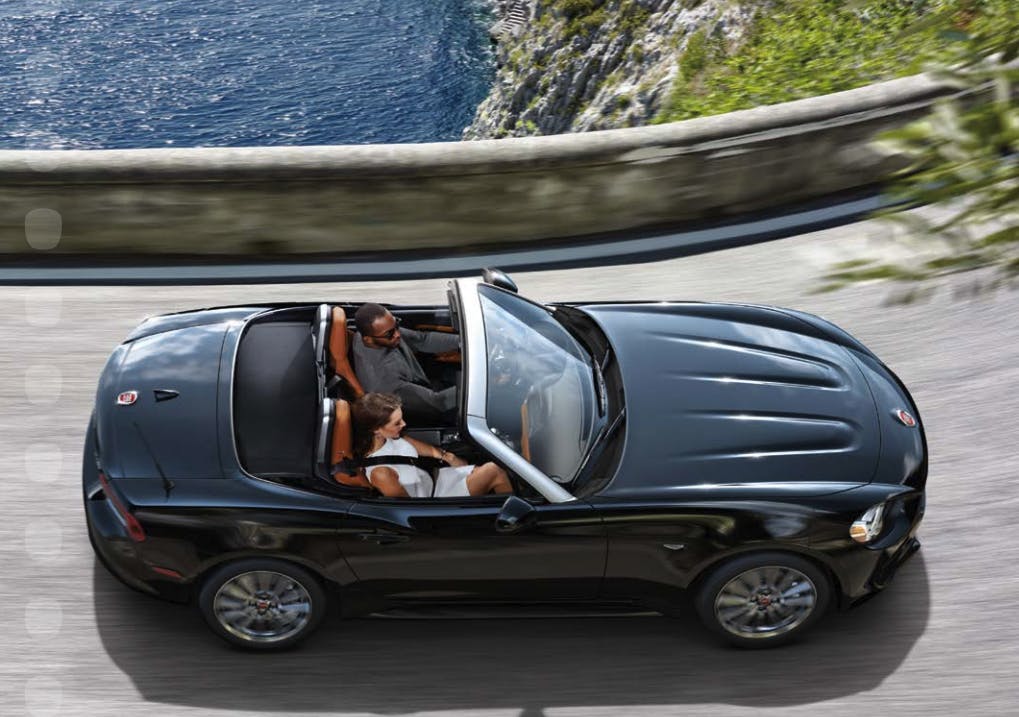
The turbocharged Fiat 124 Spider was basically an Mazda Miata (ND) with a lot more torque and a non-linear powerband. That generally upset the puritanical enthusiasts among us, but we noted that back in 2020 the Fiats were $800-$1000 more valuable and were being retailed for many thousands more than a similar Miata. That’s a serious delta in favor of the Italians, and we aren’t talking about a Lancia rally car.
While we don’t have enough valuation data to form a strong conclusion, both the Fiat and Mazda are seeing more quote activity. The ND Miata far surpasses the quasi-Italian, with almost four times more inquiries (which is understandable given the production delta between the two). But both have been on a rocky road that remains on the depreciation side of things, if only at different rates: the ND Miata lost less than one percent overall since the pandemic, while the 124 Spider is down over seven percent. Cargurus seems to agree, as ND Miatas are listed for about $2000 more than the 124. Performing a similar scan on Cars.com nets a smaller delta, with only $1000 more needed for a Miata. Times have changed, and the sporty Fiat has met the business end of the badge-engineering bat.
1967 Pontiac Firebird vs. Chevrolet Camaro

We noted during the pandemic that the 1967 Firebird was appreciating, but trailing behind its Camaro cousin. That same trend continues, as the Firebird has appreciated roughly 17 percent since then. Not a bad figure, but the Camaro skyrocketed a robust 31 percent in the same time period. (To keep things fair, unique 1967 Camaros like the Indy Pace Car, Yenkos, and Z/28s were removed from these calculations.)
A Camaro in #2 condition is roughly $5,000 more valuable than a Firebird, according to Hagerty Valuation data. The Firebird 400 Ram Air cars still fetch big money in the same condition ($108,000 for a convertible, $82,200 for a coupe) but lower-trimmed Firebirds are tragically on par with 327-cid powered Camaros (mid-$30k values) and lag behind 350-cid Camaros by nearly twenty grand.
Lincoln Mark LT vs. Ford F-150 King Ranch
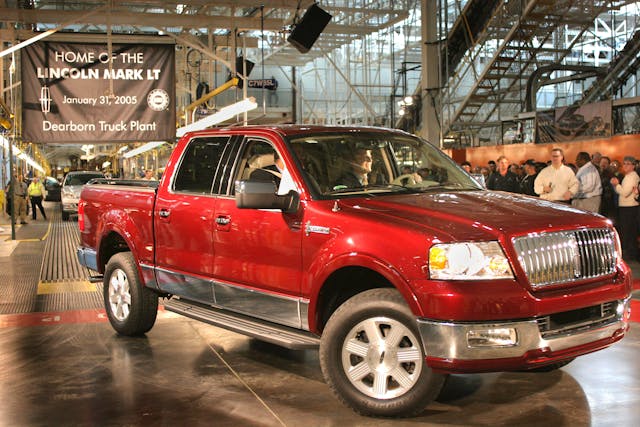
The Lincoln Mark LT is back again, and not because it’s just an offensive rebadge. Just like it did in 2020, the big Lincoln truck proves that the buying public generally doesn’t give a flip about badge engineering, at least when it comes to leather lined, crew cab pickups. Finding “comps” on Cargurus was challenging, but it’s a safe bet that a Mark LT on that website is truly worth $2000 more than a clean F-150 King Ranch or Lariat crew cab of the same year.
And two grand is a pretty serious amount of cash when factoring these trucks are likely at the bottom of the depreciation curve. Checking Cars.com for confirmation was just as challenging, but a loaded out F-150 Lariat normally retails for $2000 less than a Lincoln Mark LT. With newer models like this that aren’t (yet) collector cars, this is not an exact science*, but the data bears out the truck’s brief moment in the sun as FoMoCo’s true premium truck. The Mark LT was a hot seller for so many Lincoln-Mercury dealers when new, and Ford dealers used their clout to cut them out of the full-size truck game.
Be it a Lincoln truck or a Plymouth muscle car, badge-engineered vehicles helped move more metal for the manufacturers, and gave buyers the chance to differentiate. Now, as used vehicles, emerging collector cars, and legit classics, many have become excellent value plays while others have become legends in their own right.
*For vehicles without significant Hagerty Valuation data, values were determined using Cars.com and CarGurus online classified listings. Efforts were made to ensure an apples-to-apples comparison: Vehicles had similar year/mileage/condition/powertrains, but we are still limited by the accuracy of these website’s listings and by what’s currently for sale by their participating dealerships.



I have raged against this for a good while. Even Rolls did it to Bentley.
When new it can be done well or poorly.
Case in point the Lincoln line up presently is just a fancy Ford. Too much Ford not enough Lincoln.
Cadillac was just as bad till they went RWD in their coupes and sedans. But their small SUV models are still too much Chevy.
As for collector cars. You have to consider the popularity of styling or rarity of a model. Supply and demand vs the sister car matters.
Case in point Corvette vs XLR. Demand for the XLR is less than the Corvette. But with fewer cars the demand it has can drive higher prices. There are much fewer good XLF models out there.
Styling place a big role. The Miata is a much better looking car vs the Fiat.
The one case badge engineering works is the Escalade. It is a Chevy but people will pay more new and used.
But with collector cars there is no one thing drives prices for all models. There may be up to 101 reasons what drive it.
Some like the Camaro dies well early years. But the Trans Am does more later. Dome from styling and even a movie affected the 77-78 in black and gold. Special editions also can play.
As to values each car needs to be considered independent. There could be a conversation on each as to what drives or fails the value.
Would not call the XLR badge engineered. Related, yes. But if the body is different, and so is the engine, and it offers a retracting hardtop unavailable on the Corvette, where’s the badge engineering?
Well here is the problem. Under the skin it is a Corvette and everyone knows it.
Second the LS engine in the Vette has more power and was a better engine.
Even with a different body the Corvette was less expensive and a better car.
GM failed here as the Cadillac should have as much or more power. Even if was a Chevy LS they should have gotten their own version with more power.
The V Series supercharged could have been a base engine even if it added sone yo the price.
ARE CHEVY AVALANCHES COLLECTABLE?
Not really collectable but they do have a group of loyal fans always looking for a clean one. Maybe sone day. They are not that old.
The early FBs are always going to lose this battle just because of that butt ugly front end. Why would you want a Pont with a Camaro rear clip with that nose? Now the Smoky & the Bandit versions are beautiful!
You have to understand Delorean was fighting for a two seat car. He lost and by then the body was set.
They had to adapt the nose to Camaro fenders.
But you have to consider the car had traction links in back the Camaro lacked. It sat lower and got some good ram air 400 engines.
As for the nose it is subjective. There were less Firebirds mire yo the added cost. The Chevy was about as fast and cheaper.
Some think they are at least more interesting to look at than the Camaro. I’ll take any year Firebird over a Camaro any day of the week.
Me too but there are more Chevy fans.
It is all subjective.
Not with me they aren’t. The 67 through 69 Firebirds are gorgeous, and c’mon those Little lit Firebird marker lights on the 69 quarter panels!
Kinda taking poetic liberty with the definition of badge engineering for this article aren’t we? A Gr86 and BRZ are badge engineered. A Reliant K and Aries K are badge engineered. A C6 and XLR, a 300 and Charger are not, heck even a 67 Firbird and Camaro are a little bit of a stretch to be called badge engineered.
Escalade rebadged Chevv/GMC
What about my the old Dodge Caravan vs. Plymouth Voyager or Dodge Aries vs. Plymouth Horizon? LOL
You’ll have to check on those values yourself. This article wasn’t intended to include every example, or it would have become a book! 😆
With the popularity of pickups I’m surprised Chevy and GMC weren’t mentioned. In the early sixties Chevys were nicer than GMCs – now it’s the opposite. Not sure when the change happened but it definitely did.
Hey what about the new Zupra and the Z4? Different sides of the same car.
I like the old Mercury Capri and Cougar myself because they are a different version of the same car.
I considered them, and that might happen next time. I have a feeling I might do this every four years or so!
One man’s “badge engineering” is another man’s platform sharing. It’s been going on since the dawn of the automobile and can be done well or poorly. Like it or not it’s just a fact of life in the auto business.
Auto journos love to rail about it, seemingly oblivious to the fact that designing and engineering a different platform for every vehicle in company’s line up would be completely cost prohibitive. We all know that sharing platforms among a manufacture’s different brands, and even between different manufacturers, is a must for auto companies have any hope of profitability, given the limited volume potential of some product lines.
Praise or criticize auto companies for how well or poorly they do it, not for the fact that they do.
What many manufacturers are finding is that there is less of a need of a different brand on the fender to sell a more upscale product. Notice how many of these brands no longer exist.
If you’re talking shared platform trucks/ suvs the Hummer H-2 is the classic example. I’m not saying is was poorly built or anything but I don’t know how many guys bought those things and would say – ‘ It’s a military vehicle’. Not so fast. Its a Suburban, Silverado and and and. I still recall Lewis Black saying on The Daily Show – “The H-2, shown here in camouflage yellow… His review was less than complimentary but a very funny bit.
The Cadillac CLR and the C6 Corvette are hardly the same car with the exception of chassis and suspension. Nothing else carries over, not engine, body, roof, any interior bits etc. Not like the others mentioned that actually have nearly identical bodies and interiors including seats and door panels.
Oops. I fat-fingered XLR on my post. Ever drive an XLR? Doesn’t even feel like a Corvette in any respect.